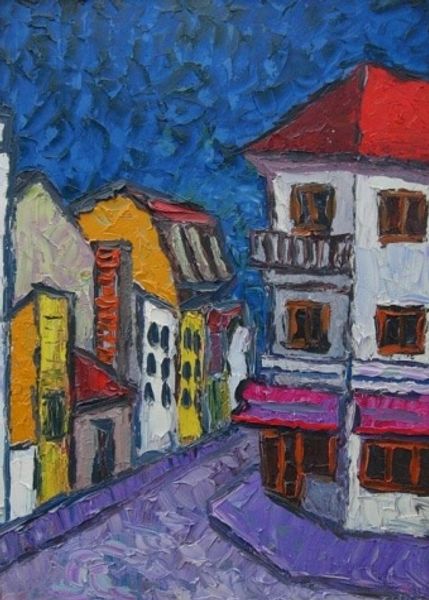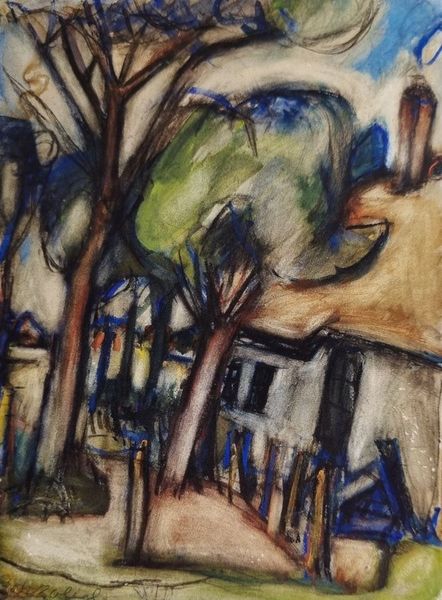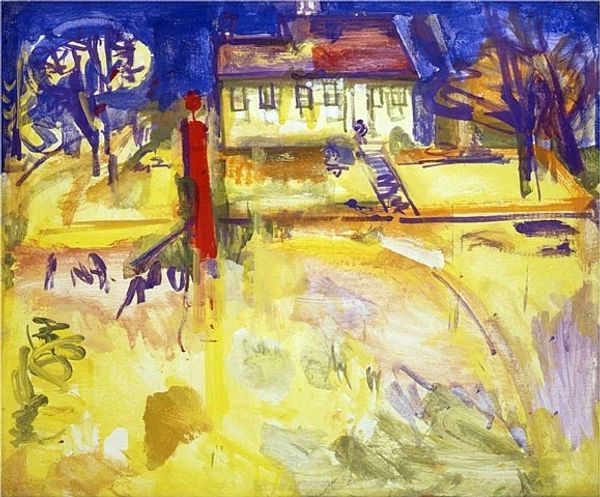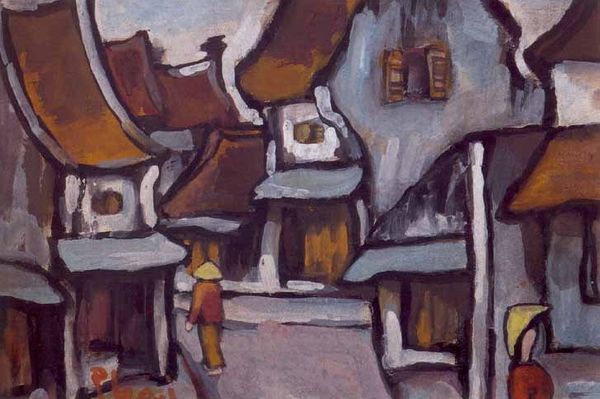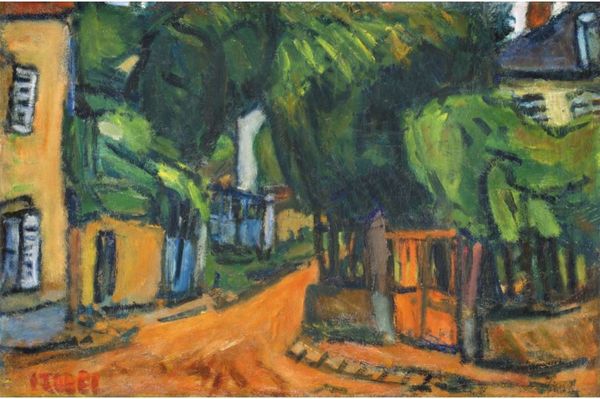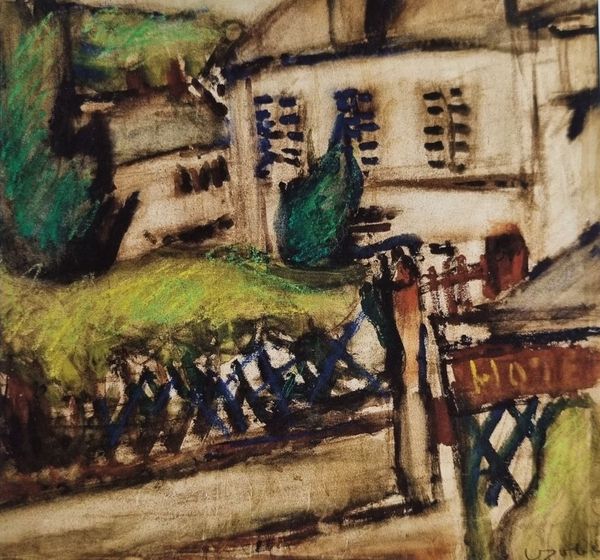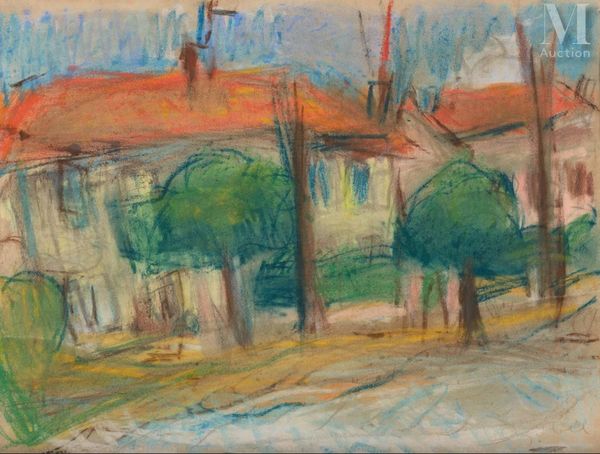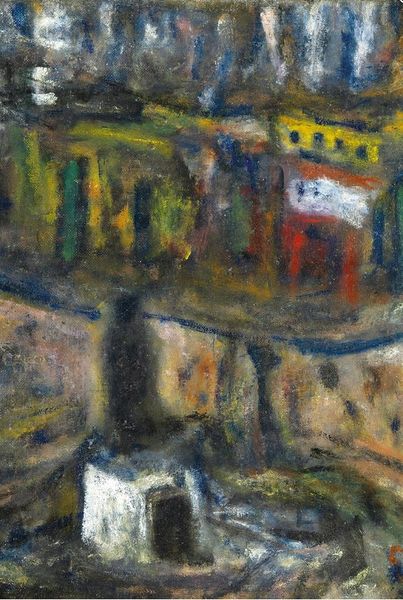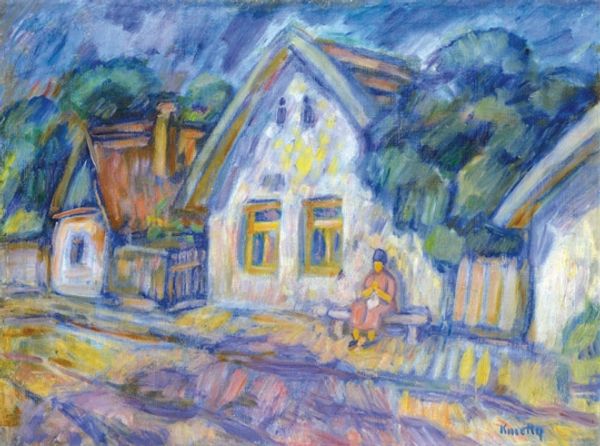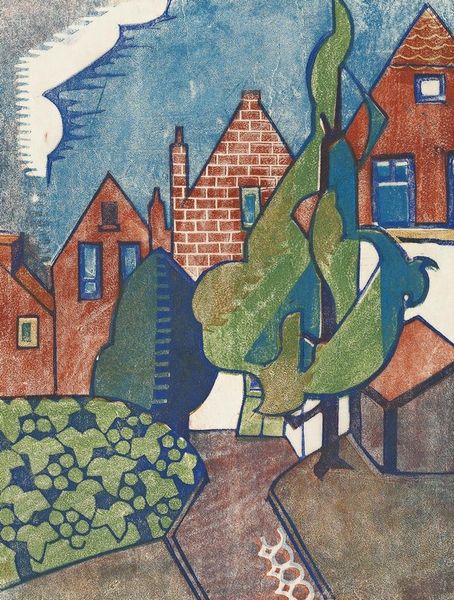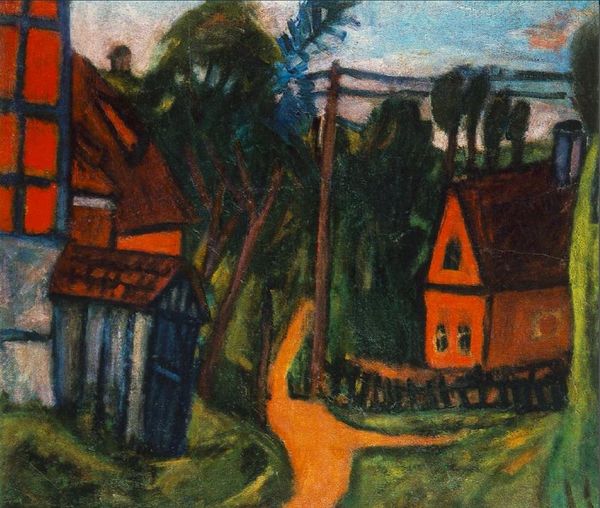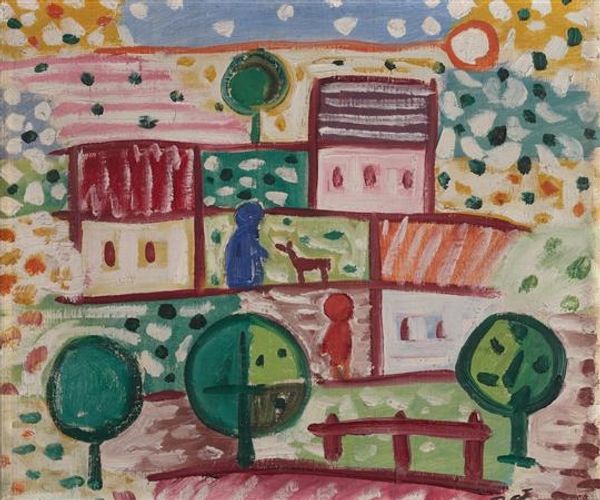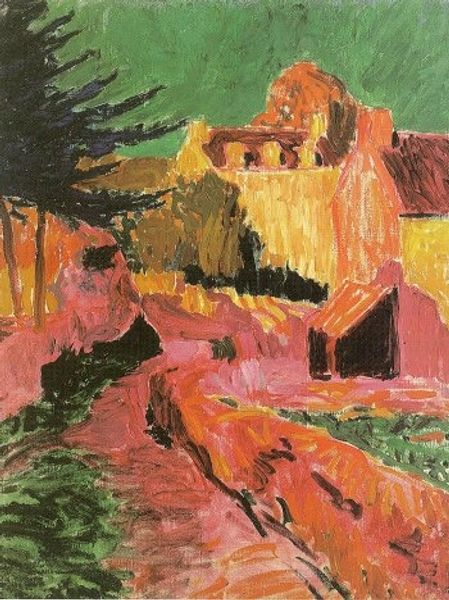
painting, oil-paint
#
painting
#
oil-paint
#
landscape
#
expressionism
#
cityscape
Copyright: Bela Czobel,Fair Use
Here we see Bela Czóbel’s ‘Czóbel House’, a painting where the house is not merely a structure, but a vessel of memory and feeling, rendered with Fauvist intensity. Consider the chimney, a stark, phallic form. It echoes through art history, from ancient Roman hearths to Renaissance depictions of domesticity. But here, its bluntness hints at something more primal, an assertion of home as a fundamental, almost aggressive need. The windows are dark, unreadable. They are like the eyes of a portrait, holding secrets, suggesting an interior life that is both familiar and unknowable. The path leading to the house is a sinuous curve, reminiscent of the labyrinthine routes of our own minds, and the figure walking toward the building represents the eternal wanderer returning home, a motif as old as the Odyssey itself. The house, then, is a symbol of the self, a container of identity. Each return is not just a physical journey, but a psychological homecoming. The house, in its artistic representation, becomes a stage where the drama of human existence unfolds, continuously reshaped by memory and experience.
Comments
No comments
Be the first to comment and join the conversation on the ultimate creative platform.
